
Endangered parks fight to survive
Once more than 3.5 million acres of East Texas, Big Thicket National Preserve currently stretches across only 97,000 acres of land and is in danger of an even greater reduction in size due to commercial, industrial and residential developments.
Big Thicket however, is just one of many of our national treasures that are being stripped of its value.
“It’s not like we can make new ones,” is the National Parks Conservation Association slogan this year to advise the public and government about the state of our national parks and the urgency of acting to protect them.
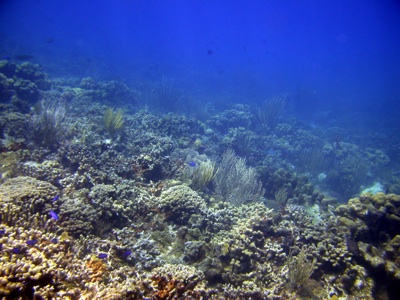 |
A hiker takes in the scenery of Shenandoah National Park in Virginia (Photo courtesy of the National Park Service). |
Founded in 1919, the NPCA is America’s only private, nonprofit advocacy organization that works with the Department of Interior’s National Park Service to ensure the protection, preservation and enhancement of what they believe to be our nation’s heart and soul; the national park system.
The NPCA, is one out of hundreds of other nonprofit organizations working towards the same goal. However, they have had the most success with national park funding and educating the public about the national parks and their needs.
Educating others ranks high on the NPCA’s list of things to do. Being that there are hundreds of national park sites and thousands of issues to address, the NPCA tries to prioritize those parks that are in most dire need of help.
For six years, the NPCA was able to narrow these parks down to a list of ten sites and the information was provided to the public via an annual press release titled America’s Ten Most Endangered National Parks. The most recent list was released in 2004 and has not been updated.
| One of the many waterfalls at Shenandoah National Park (Photo courtesy of the National Park Service). | 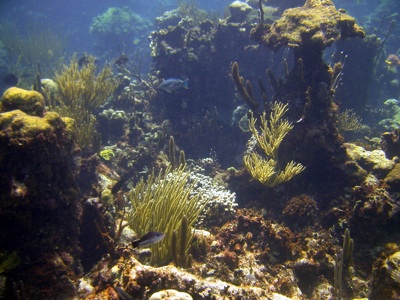 |
Andrea Keller Helsel, director of media relations for the NPCA, explained that not much has changed for parks on the list in the past three years, If anything, she said, matters may be worse.
“The number of problems and unresolved issues with our nation’s parks continues to increase each year. It has become nearly impossible to keep it to our usual top ten,” she said
The current list includes:
- Big Thicket National Preserve (Texas)
- Biscayne National Park (Florida)
- Everglades National Park (Florida)
- Great Smoky Mountains National Park (North Carolina-Tennessee)
- Joshua Tree National Park (California)
- Organ Pipe Cactus National Monument (Arizona)
- Shenandoah National Park (Virginia)
- Underground Railroad Network to Freedom program (26 states and Washington, D.C.)
- Wrangell-St. Elias National Park and Preserve (Alaska)
- Yellowstone National Park (Idaho, Montana, and Wyoming)
Parks on the list were chosen because they highlight troubles/ threats that exist on a larger scale at almost all of our national park sites. Although the NPS and the NPCA work hand in hand to address these issues yearly and remove parks from the top ten, some parks became veterans to the list and, to this day, continue to be considered most endangered.
Shannon Estenoz, director of the NPCA’s Suncoast Region in Florida, said, “We may not have published a list in the past few years, but Biscayne National and Everglades National are without a doubt some of the sites that need immediate attention if we want to continue to enjoy their beauty.”
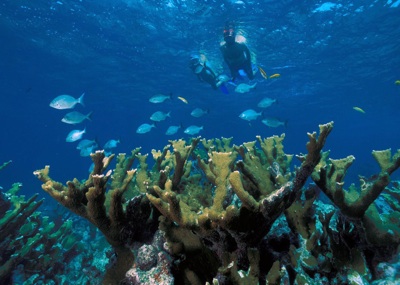 |
A wild bird hunts for food in water at Everglades National Park (Photo courtesy of the National Park Service). |
The Everglades, also known as the “river of grass,” today has shrunk to less than half the size of what it used to be. Fresh water from the park has been drained and diverted into canals to the extent that it can no longer support all the wildlife and residents of Florida that depend on it.
The water now entering the system is polluted and 68 species of plants and animals that are native to the Everglades have become endangered. The everglades have also most recently had to deal with threat of non-native species such as the Burmese python.
Further north of the Everglades, located within North Carolina and Tennessee; lay the Great Smoky Mountains, which ironically are being threatened by an increase of air pollution— smoke— in the area.
Pollution from nearby Tennessee Valley Authority power plants poses a significant problem for the park and its wildlife. The pollution has even affected visitors by creating a haze that decreases visibility of scenic locations by 60 to 80 percent.
The Great Smoky Mountains National Park has also fallen victim to inadequate funding and staffing and invasive pests and diseases that are damaging its many species of trees.
A close neighbor of the Great Smoky Mountains, Shenandoah National Park has been suffering for years due to inadequate funding. Shenandoah’s costs continue to rise and are surpassing its budget.
| Visitors are attracted to the colorful terrain found at Yellowstone National Park (Photo courtesy of the National Park Service). | 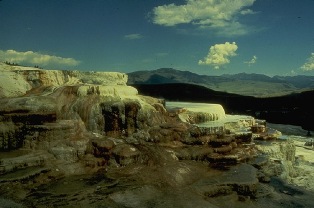 |
Karen Beck-Herzog, national park service media contact for Shenandoah, commented that the issue of funding is improving due to an increase the park received this past year from the president. They are projected to receive even more funds in the following year but it continues to remain a concern for the park.
Beck-Herzog said that exotic and invasive species have become a large threat as well, “More than 25% of what visitors see at the park does not actually belong here.”
Shenandoah has also been affected by poor air quality, causing visibility from scenic overlooks to drop from 115 miles to less than 25 The increase of land development dangerously close to the park’s borders is something park conservationists have had to consider too.
The last of the endangered veterans, which stretches across the states of Wyoming, Montana and Idaho, is Yellowstone National Park. In recent years the most pressing issue this park has had to face is the use of snowmobiles and the protection of its iconic bison. The use of snowmobiles within the park has posed a threat to the health of staff and visitors as well as the park’s wildlife. Snowmobile activity has even been a cause of the quality of air diminishing within the park.
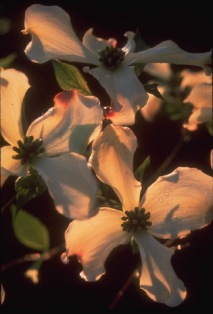 |
Wildflowers at Shenandoah National Park (Photo courtesy of the National Park Service). |
The bison’s terrain has been taken over by the use of snowmobiles therefore forcing bison to wander off parklands. State officials have reportedly killed bison that do leave the perimeters of Yellowstone. Yellowstone, like most other parks, also lacks funding needed even for simple day-to day tasks.
Considering that the Everglades, the Great Smoky Mountains, Shenandoah and Yellowstone are only four out of 385 sites found throughout the U.S., it is reasonable to agree that the maintenance and well being of our nation’s parks should be closely monitored as a national priority.
Whether it is pollution of air or water, intrusion by invasive species, endangerment of native species, a general lack of funding or nearby land development, most, if not all, of these issues concern the vast majority of our parks.

Comments are Closed